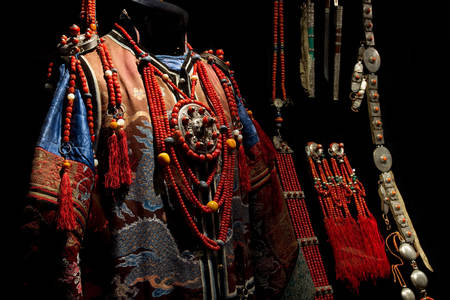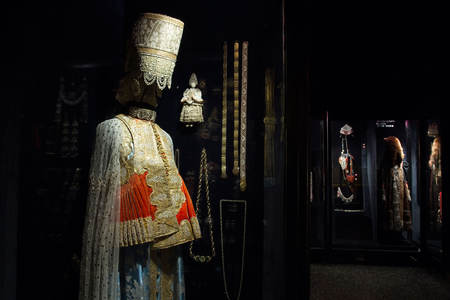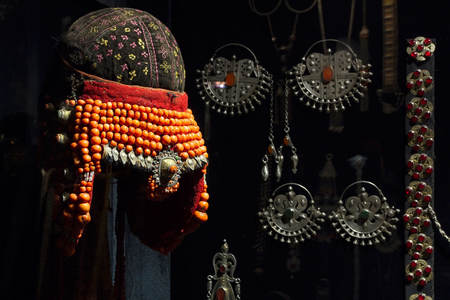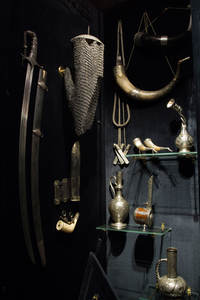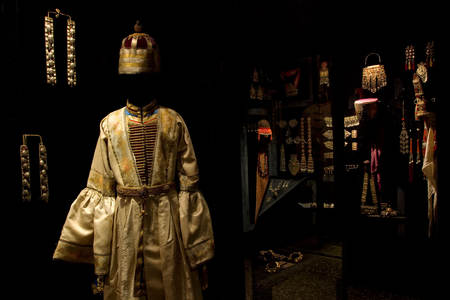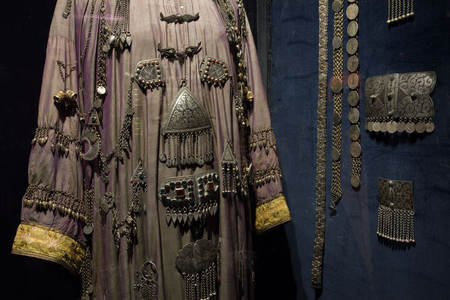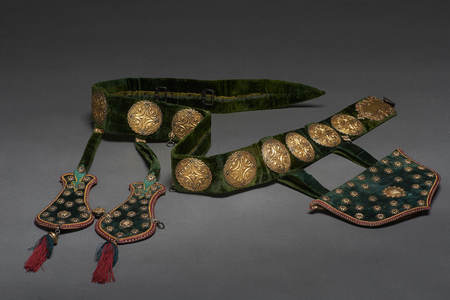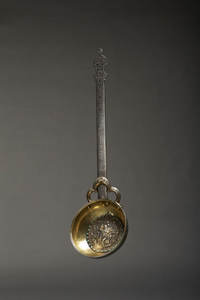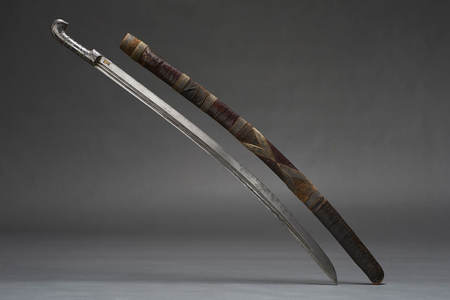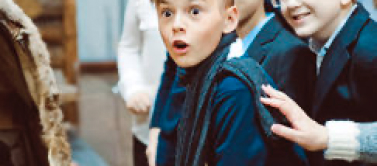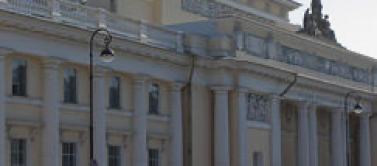Treasures of the Rarities Storeroom
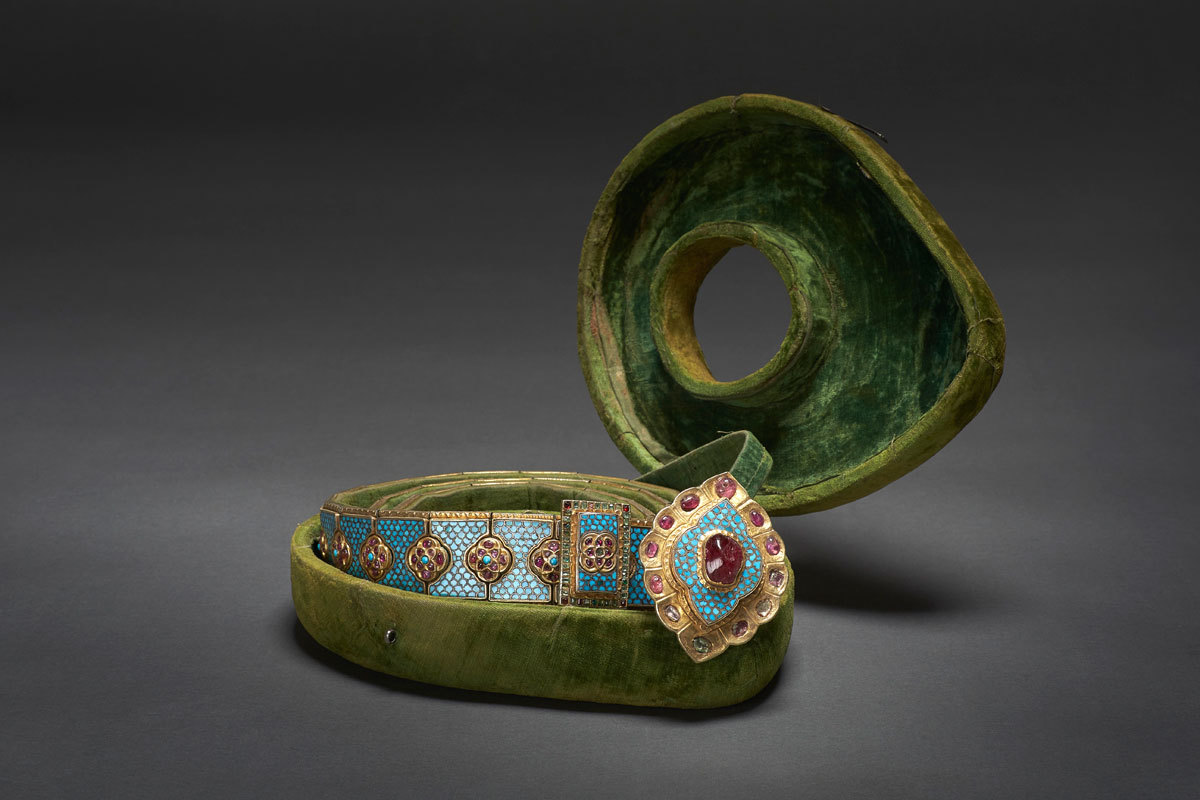
Special Storeroom is a kind of safe room where the Museum’s treasures are collected: jewelry, valuable weapons, ceremonial horse trappings, and other precious articles of various peoples of Eurasia. Some of these objects were previously owned by the Royal family; embassy gifts are also kept here. What did the Emirs of Bokhara bring to the Russian Emperors? What valuable Buddhist ritual objects did Kalmyk and Buryat delegations present? Why was jewelry trimmed with pearls popular among many peoples of Russia? Where were they gathered? What decorations were made from it? For which social strata did pearls serve as a sign of prestige and wealth? Why were holy vessels decorated with it? What earrings were especially popular in Russia? What traditional techniques did Tatar jewelers use? Why do artists and jewelers of our days come to products of traditional craftsmen?
But nonetheless, why “Special Storeroom”? What is the distinction of this depository? From the start of acquisitions for museum collections, it became necessary to have a storeroom for especially valuable items. Among the first “lodgers” of the safe room were offerings to the Royal Family from noble representatives of peoples inhabiting the Russian Empire. They are Buddhist cult objects; austere and reserved, silver-finished Caucasian weapons; luxurious weapons and horse harnesses shining of gold and precious stones from the gifts of the Emir of Bokhara; and tray dishes for offering bread and salt made by talented Russian jewelers. Later, the Special Storeroom received collections on various peoples handed to the Museum by Emperor Nicholas II from 1902 till 1915.
Later, when setting up the depository, valuable objects from well-known collectors acquired by Museum employees in expeditions and purchased from private persons were received there for storage. From the 1930s on, objects containing precious materials were purposefully transferred to the depository from all of the Museum’s assets. Since then, the presence of precious metals, precious stones, and pearls has been the only basis for accepting artifacts to the storeroom. This is why the items of the Special Storeroom are so diversified both in their ethnic attribution and in the meaning of particular objects in the culture of different peoples. They are decorations, and utensils, and cult objects, and ceremonial harnesses, and weapons.
Judaic cult objects
The Museum has a unique collection of Judaic cult objects. The most valuable of them may be seen in the exposition. Of special interest is the set of artifacts related to the ceremony of reading the Torah (holy scroll), the most sacred thing for the Jews. They include the Torah crown topping the holy book scroll; Torah shield, or tass (a silver plate with a tiny window where a caption was inserted explaining which exactly chapters from the Bible are to be read on particular festive days); and yad, a pointer for reading the Torah, shaped as a hand and richly decorated with niello ornament.
Besides, the collection comprises ritual cups, tefillin boxes, mezuzahs, hadas spice boxes used to finalize the festive day of Sabbath. Such boxes occurring in the Middle Ages were first shaped as gothic turrets, and starting from the 18th century, shaped as flowers, animals and birds. Finally, presented in the Special Storeroom are Hanukkah lampstands with eight lights. The lamps had various shapes, from simple as spoons to complex structures of filigree workmanship. They were used for Hanukkah, the festival of lights lasting eight days. Many of these objects have brands (most often Polish) and are dated 18th through early 20th century.
Russian pearls
The Special Storeroom’s collection will let you see all the diversity of decorations of peoples of the Russian Empire. Most decorations of the Russian asset are buttons, earrings, and headgear trimmed with pearls. Pearls gathered in Varzuga, Kem, Pinega and other rivers in the north of Russia were favorite material for decoration. All women’s and girls’ headgear of our depository are richly embroidered with fresh-water pearls and gold thread, and some are decorated with semi-precious stones and strings of pearls threaded on horse hair or linen thread. The headgear have a lot of versions typical for one or another province or district of the northwestern part of European Russia.
The collection contains all types of Russian earrings of the 16th through the early 20th century. The most widespread in the 15th – 17th centuries was the earring type shaped as the question mark. Depending on the number of pins, they were called “single ones,” “double ones,” and “triple ones.” Massive silver earrings are related to the Novgorod culture of the 16th – 17th century. The convex relief images on both sides are covered with filigree ornament, enamel, color glass or stone inserts. Earrings shaped as tiny baskets decorated with river pearls and rhinestones appeared in the late 18th – early 19th century under the influence of the Baroque style. Butterfly- or bowknot-shaped earrings were also popular, with pear-shaped pendants or with pendants shaped as grape clusters. River seed pearls were also used in the making of such earrings. In folk decorations, valuable stones were replaced with color glass, beads, or rhinestones, but pearls were preferred at all times.
Buddhist rarities
The Russian Museum of Ethnography has unique works of Buddhist art. They are ritual statuary, vessels for holy water, prayer wheels, shells trimmed in silver and used as musical instruments, and other decor of the Buddhist altar. Most of these artifacts were presented to members of the Imperial Family by Kalmyk and Buryat delegations. Among them are such masterpieces of Buddhist plastic arts as the images of the savior deities White Tara and Green Tara, goddess of longevity Ushnishvijaya the mother of all the Buddhas, and conventional images of mandala, or universe. The exposition presents the mandala in the form of a metal dish, also used for collecting donations during temple services. In the collection of gifts is a unique silver tray, an indispensable attribute of state ceremonies. It was presented to Emperor Alexander III for his coronation day by the Don Kalmyks.
Jewelry of the Kazan Tatars
The Kazan Tatars’ decorations were much diversified. They are all kinds of earrings, plait pendants, beads, necklaces, clasps, belt buckles, shoulder sashes, bracelets, and rings. The center of jewelry production was Kazan. This art reached its pinnacle in the middle of the 19th century. Decorations were mostly made of silver, and gold was sometimes used. Gilding, punchwork, molding, engraving, and filigree were widely used. One of the most original decorations of the Kazan Tatars was the shoulder sash. It was worn both by girls and by elderly women, putting it on over the left shoulder and under the right arm. Often, a box with a prayer, an excerpt from the Quran, was sewn to the sash. Original and exquisite are collar clasps, an indispensable decoration of a rich Moslem woman. These decorations, apart from topazes, amethysts, turquoise, malachite, carnelian, and agate fancied by the Tatars, used many color glass inserts.
Gifts from Bokharan Emirs to the Imperial Family
The diplomatic relations between Russia and Central Asian countries developed over centuries. They suggested indispensable exchange of gifts and tributes through ambassadors. The set of gifts was unvaried: robes, sashes, valuable fabrics, harness décor, and ceremonial weapons. Those were the best examples of high Central Asian applied art. One of the most prestigious gifts was a robe, a token of special respect to the gift recipient. Shown in the exposition is a velvet upper robe decorated with natural pearls. Such robes were worn without a belt, while the under-robe was girt by a luxurious sash with golden onlays and inserts of turquoise and precious stones. Also presented is a filigree box all gemmed with small turquoise inserts and almandine cabochons. Of horse decorative trappings, a saddle-cloth decorated with gold embroidery and silver plaques is shown. Gold embroidery at the court of the Emir of Bokhara was men’s job, which was considered a very decent occupation.

